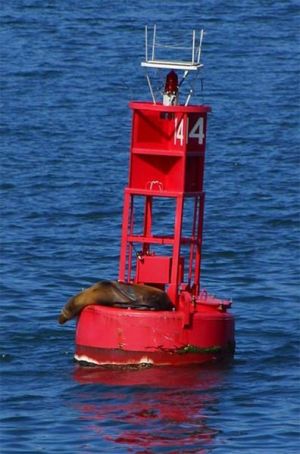England's Historic Seascapes: Southwold to Clacton
Oxford Archaeology (South), 2007. https://doi.org/10.5284/1000277. How to cite using this DOI
Data copyright © Historic England unless otherwise stated
This work is licensed under the ADS Terms of Use and Access.
Primary contact
Oxford Archaeology (South)
Janus House
Osney Mead
Oxford
OX2 0ES
UK
Tel: 01865 263800
Fax: 01865 793496
Resource identifiers
- ADS Collection: 746
- ALSF Project Number: 4729
- DOI:https://doi.org/10.5284/1000277
- How to cite using this DOI
England's Historic Seascapes:
Southwold to Clacton
ALSF Project Number 4729
Oxford Archaeology, 2007
Sledway and Bawdsey Bank
Primary Subcharacter Type:
Caution area

Main Character / current form and use
The Sledway and Bawdsey Bank area is one of several pairings of sandbank and channel off the Suffolk coast near Orford which form a series of treacherous navigational features and hazards in the approach to the Alde/Ore, Butley and Deben estuaries. The pairings are considered together due to the dynamic nature of sandbanks. This area is bordered to the west by Hollesley Bay Channel and Whiting Bank and to the east by Shipway and Shipwash. In the south of the area a feature known as Kettle Bottom lies between the sandbank and channel. This is a product of cemented volcanic ash within the London Clay.
The character area is predominantly characterised as a navigational feature or hazard on the main sailing route into Orford Haven and subsequently the Alde, Ore and Butley estuaries. A Royal Yacht Association (RYA) sailing route runs directly through the centre of the area from east to west, linking Hollesley Bay with the larger Shipwash channel. The area is generally coastal and is avoided by larger commercial shipping.
The maximum depth within the Sledway Channel is 20 m, decreasing to 10 m. The depth over Bawdsey Bank is mainly 5 - 10 m though a raised area in the centre of the feature can be shallow enough to dry. The tidal range in the character area is within the range of 2-4 m at Mean Spring Tide (DTI 2004). The sediment is generally gravelly muddy sand although the deeper section of Sledway is gravel. A total of two of the four known shipwrecks are considered dangerous, three are situated just off Bawdsey Bank.
Additional hazards include an area of sandwaves in the vicinity of Bawd Head to the north of the area, shown to be migrating north-north east at a rate of 20 m per year (UKHO 2006).
As a result of its proximity to the ports of Harwich and Felixstowe the area comes within the jurisdiction of the Harwich regulatory system. It is subject to restrictions concerned with high speed craft, submarine cables and traffic separation and is covered by Vessel Traffic Services (VTS). The area is also commercially fished.
Historic Character and archaeological potential
Bawdsey Bank appears on the 1855 Admiralty chart and Sledway on the 1905 version. The area is in a location likely to have involved coastal trade, however the absence of the channel on the former chart may indicate it was not used as such until later. Only four wrecks are known to be located within the area and none are identified, possibly indicating that the area has never been a popular shipping route.
Little is known about the history of the character area, however HMS Arethusa, flotilla leader for the Harwich destroyer flotillas, was recorded as having hit a mine in Sledway which was previously presumed to have been mine-free. The vessel went on to sink off the Cutler (see Cutler character area).
The area has potential to contain submerged prehistoric landscapes, features or artefacts, having been dry land prior to 8000 BP. However, no investigation work is known to have been done in this area.
Character perceptions
The character area is intimately linked to the areas either side of it, Hollesley Bay and Shipway/Shipwash, linking the two better known navigational features at the entry to Orford Haven and the Alde, Ore and Butley estuaries. As a consequence it is generally perceived a s a leisure sailing area.
Bibliography
DTI, 2004, Mean Spring Tidal Range: Atlas of UK Marine Renewable Energy Resources. Department of Trade and Industry, 2004
UKHO, February 2006, Thames Estuary North Shipwash: Assessment on the Analysis of Routine Resurvey Area TE2A from the 2005 Survey. UKHO
Wikipedia. Available at: http://en.wikipedia.org/wiki/Main_Page (07/03/2007)








